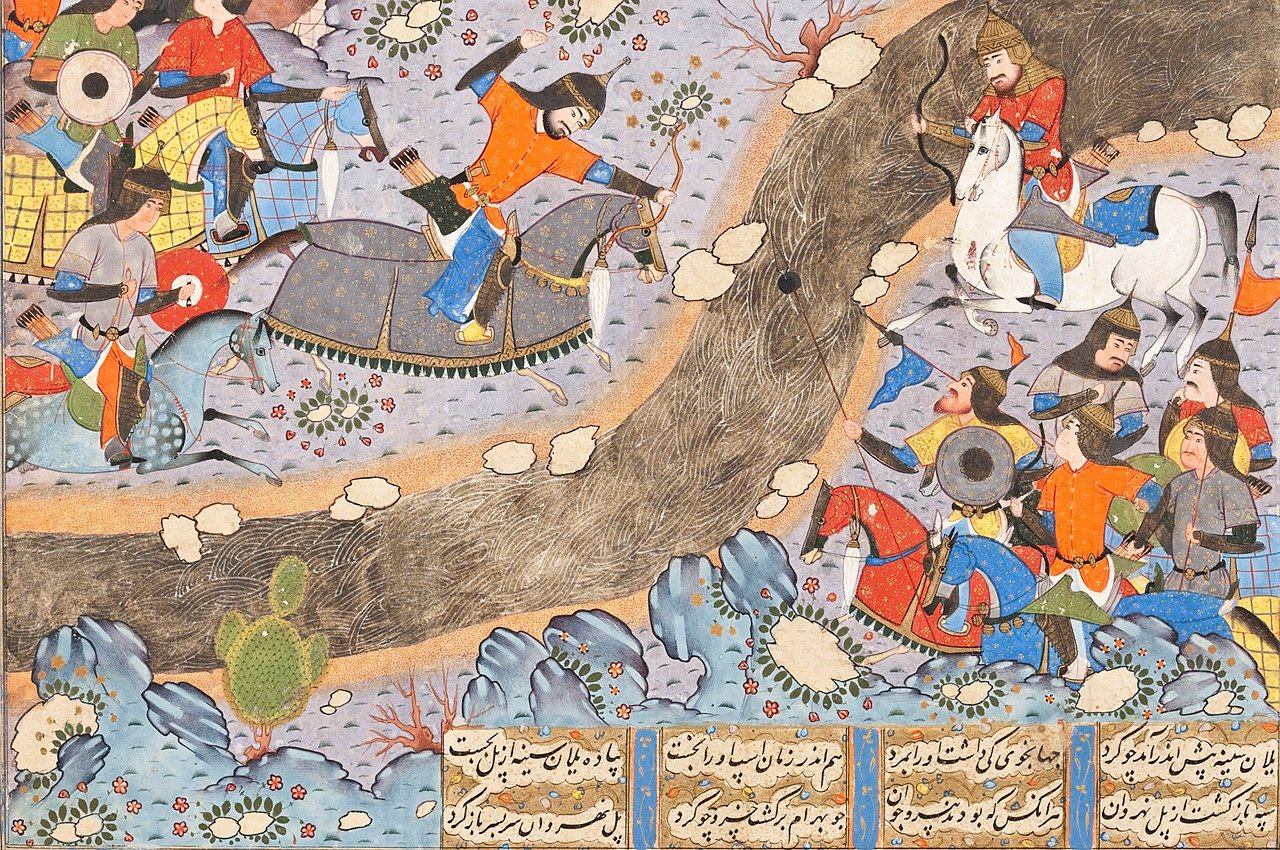Khosrow II, also known as Khosrow Parviz, was the last great king of the Sasanian Empire, which ruled over Persia from 224 to 651 CE. His reign, which lasted from 590 to 628 CE, is considered one of the most influential in Sasanian history. Khosrow II not only expanded the empire through military conquests but also implemented numerous administrative reforms that strengthened the state. Under his rule, the Sasanian Empire experienced a cultural and artistic renaissance, and he played a significant role in shaping relations with the Byzantine Empire. However, despite his accomplishments, the empire eventually fell, leading to Khosrow II’s imprisonment and eventual assassination. This article will delve into the life and reign of Khosrow II, exploring his achievements, downfall, and lasting impact on Sasanian and Persian history.

Who was Khosrow II?
Khosrow II, born in 590 CE, was the son of Hormizd IV, the Sasanian king who ruled Persia from 579 to 590 CE. He belonged to the Parthian-ruled House of Sasan, the ruling dynasty of the Sasanian Empire. Khosrow II ascended to the throne in 590 CE, following the murder of his father by the nobles of the court. He reigned as king until his downfall in 628 CE. Khosrow II is often referred to as “Parviz,” meaning “the victorious” in Persian, due to his numerous military successes.
Early life and ascension to the throne
As a young prince, Khosrow II received an exceptional education, studying not only the arts and sciences but also military tactics and administration. He was known for his intelligence and grasp of diplomacy from an early age. When his father was assassinated, Khosrow II was proclaimed king by the nobility, who saw him as the rightful heir to the throne. At just 20 years old, he began his rule, facing both internal and external challenges.
Khosrow II’s military conquests
One of Khosrow II’s most significant achievements was his military prowess and his expansion of the Sasanian Empire. He launched several successful military campaigns, capturing territories and expanding Persian influence across the region. Most notably, he conquered Egypt, Armenia, Libya, and parts of Arabia. His military genius was evident in his ability to lead his troops to victory in battles against formidable adversaries.
Khosrow II’s administrative reforms
In addition to his military conquests, Khosrow II implemented sweeping administrative reforms that brought stability and prosperity to the empire. He introduced a fair taxation system, streamlined the bureaucracy, and appointed competent officials based on merit rather than birthright. Khosrow II’s policies aimed to strengthen the central government and improve the lives of his subjects.
The empire under Khosrow II’s rule
During Khosrow II’s reign, the Sasanian Empire reached its peak in terms of territorial expansion and political power. The empire stretched from the Euphrates River in the west to the Indus River in the east, covering present-day Iran, Iraq, Syria, and parts of Central Asia. The capital city, Ctesiphon, became a thriving center of commerce and culture under his rule.
Cultural and artistic achievements of Khosrow II’s reign
Khosrow II’s reign marked a period of cultural and artistic renaissance in the Sasanian Empire. He was a patron of the arts, literature, and architecture, fostering a vibrant cultural scene that produced remarkable works. The creation of magnificent palaces, paintings, sculptures, and manuscripts flourished during this time, showcasing the empire’s rich artistic heritage.
Khosrow II’s relationship with the Byzantine Empire
The relationship between Khosrow II and the Byzantine Empire was complex and characterized by both conflict and diplomacy. Khosrow II engaged in numerous military campaigns against the Byzantine Empire, aiming to weaken its influence and expand Persian control. However, he also engaged in diplomatic negotiations, signing the Peace of 591 and the Eternal Peace of 628, which brought periods of stability between the two empires.
The fall of Khosrow II’s empire
Despite his initial successes, Khosrow II’s empire faced significant internal strife and external threats. Revolts, economic instability, and a protracted war with the Byzantine Empire weakened the empire’s foundations. Additionally, a devastating plague swept through the region, causing further turmoil and unrest. These factors ultimately contributed to the fall of the Sasanian Empire.
Khosrow II’s imprisonment and assassination
In 628 CE, Khosrow II was overthrown by his son Kavadh II, who accused him of misrule and tyranny. Khosrow II was imprisoned and later assassinated, marking the end of his reign and the beginning of a turbulent period in Persian history. His death was followed by a series of power struggles and conflicts, leading to the collapse of the Sasanian Empire.
Legacy of Khosrow II
Khosrow II’s legacy is complex and multifaceted. While he is remembered as a great king and military strategist, his reign also witnessed significant internal turmoil and the ultimate downfall of the empire. He left a lasting impact on Persian history through his administrative reforms, cultural patronage, and military conquests, shaping the course of the Sasanian Empire and its subsequent successors.
The historiography of Khosrow II’s reign reflects the varying perspectives on his rule. Some sources depict him as a wise and just ruler, while others emphasize his autocratic tendencies and the challenges faced by his empire. Despite the controversy surrounding his reign, it is undeniable that Khosrow II played a crucial role in shaping the course of Sasanian and Persian history. His military conquests, administrative reforms, and cultural achievements left an indelible mark on the region, influencing future generations and shaping the legacy of the Sasanian Empire.



